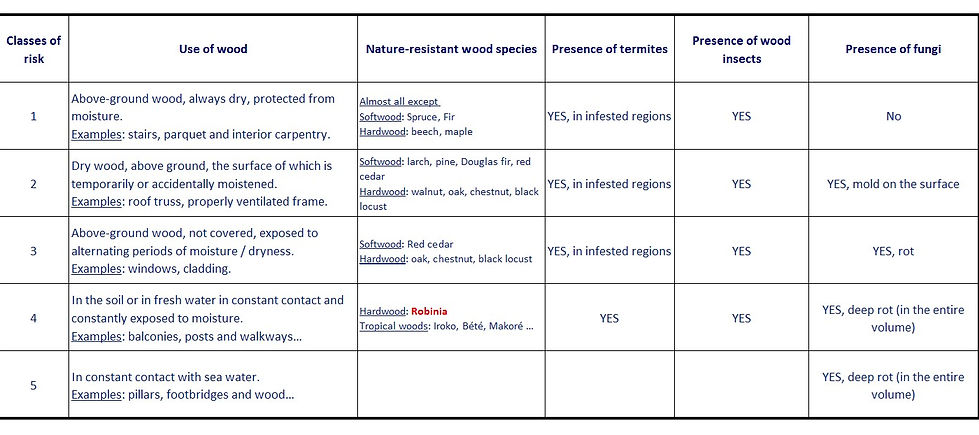Acacia and its competitors
Sustainable - Ecological - European - Quality Wood
.jpg)
According to the European standard, acacia wood is the only European species suitable for use in risk class 4, "Outdoor use in contact with soil and fresh water exposed permanently to moisture," just like some tropical species such as Iroko and Ipe. However, these tropical woods arrive in Europe after traveling thousands of kilometers, which negatively impacts their carbon footprint. In addition, the management of some of these forests is not always respected. At the European level, two species try to compete with acacia wood: oak and chestnut. However, these two species are classified in risk class 3. They can be used outside, but without contact with soil and permanent humidity.

For use as wood poles and therefore a wood permanently in contact with the ground, it has been proven that an oak stake will have a lifespan of about 15 years and chestnut stakes will have a lifespan of 20 years, while acacia poles will have no deterioration for 60 years. Thus it is generally accepted that it will take 4 oak stakes or 3 chestnut stakes to match the duration of an acacia pole.
The chestnut technical sheet established by the Center for International Cooperation in Agricultural Research for Development (CIRAD), informs us about its characteristics in terms of its durability. The tables below allow us to compare the locust tree with its main European 'competitor', the chestnut tree.
For the same usage, other materials can be used: PVC, metal or concrete. Although they have positive characteristics such as durability, these materials are more expensive, do not blend in natural landscapes, and have a very negative carbon impact.
The table below compares the different materials that can be used for the production of poles:

Table note:
Oak has good natural characteristics but it is one of the most expensive wood species on the market.
The chestnut has good durability but it has a shorter life span than acacia. Concrete will require little maintenance but is seen as "aggressive" in the landscape. PVC is the most economical solution, but it is unattractive and not very resistant. Stone is the most durable solution, but it has the highest price. Steel will blend in with the environment, but will remain more urban than a wooden fence and will require more maintenance. Spruce is a softwood, mostly for outdoor use (like other wood in class 1 to 3), and must undergo autoclave treatments to make it resistant to water and fungi lignivore species. However, these treatments leave a strong ecological footprint.
